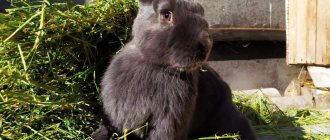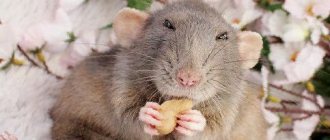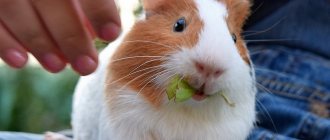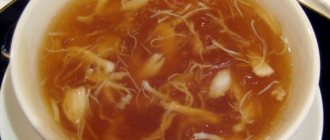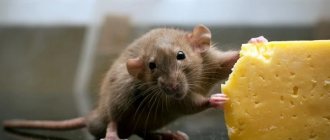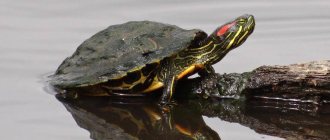- home
- Guinea pig
- Guinea pig nutrition
02/14/2019 The guinea pig is an absolute vegetarian. Greens occupy an important place in her diet. In the summer, it makes sense to completely switch the rodent to green food. First you should find out which grass is beneficial for guinea pigs and which can be harmful.
Green feed
Wild herbs, which can be picked in forest belts, along the banks of rivers, lakes, and cultivated herbs grown by humans, form the basis of the diet of rodents in the summer.
Most of the plants given to pigs can be found on the human table. But you shouldn’t focus on this. You should not give them green onions and garlic. Bay leaves, which are used by housewives as a means of adding flavor to dishes, are poisonous to guinea pigs.
The pig is given freshly picked grass or hay is prepared. In both the first and second cases, the plants must be clean and environmentally friendly. Freezing is allowed for the winter.
Some herbs can be given to guinea pigs daily (such as sedge and dill), others are given intermittently (chamomile).
Properties of celandine
Celandine is an inconspicuous, unpretentious weed that grows everywhere.
As already noted, it refers to poisonous plants. It contains about 20 alkaloids, which in case of overdose can be called the purest poison for the body of birds. In addition, celandine contains vitamin C, carotene, organic acids (succinic, citric, malic), biologically active compounds, essential oils, flavonoids, saponins, tannins. As a rule, all of the listed substances have healing properties to one degree or another, but mostly only when used externally.
Indeed, celandine is beneficial for the human body. But for poultry and animals it has the opposite effect. In case of overdose, the alkaloids contained in celandine can cause muscle spasms, cramps, and provoke intoxication.
The benefits of succulent feed
Each plant is endowed with a set of useful substances, which determine its benefits for the rodent:
- Snooze. It can be present in your pet’s summer diet every day. Improves digestion and enriches the body with vitamin C. It is especially useful in the spring, when you can pick young leaves of honeydew in the clearings.
- Red and white clover. Contains vitamins, proteins and essential oils, fiber. Give this herb in small portions no more than twice a week, and only on mature plants. It is contraindicated to give clover leaves to females who are carrying cubs due to the risk of miscarriage.
- Plantain is useful for rodents due to potassium, glycosides, enzymes, tannins, and vitamins. The rodent benefits from young leaves that are collected away from the highways.
- Quinoa. Contains many useful microelements. In small quantities it is beneficial. Because of oxalic acid, it is given with caution, no more than once every 2 weeks, so as not to provoke urolithiasis.
- Chamomile. It is a medicinal product, removes inflammatory processes in the body, acts as an antispasmodic and a sedative. Fresh chamomile is given to pigs once a week as a preventive measure. Decoctions are effective for stomach disorders.
- Burdock. Improves metabolism, is a storehouse of vitamins and tannins. Pigs benefit from roots and young leaves in the spring-summer season.
- Sedge. Favorite grass of rodents with a rich composition of nutrients. In spring and summer you can include it in the animal’s daily diet.
- Spinach. Rich in proteins, vitamins and potassium. In spring, animals are given fresh leaves. They can be frozen for the winter.
- Dandelion. Only leaves can be given. As a vitamin spring green, it is simply irreplaceable.
- Cilantro. Rodents have ambivalent attitudes towards this spicy greenery, which contains a rich range of beneficial microelements and vitamins. Because of its specific taste and aroma, some pets love cilantro, while others don’t even touch it. Can be included in the diet all year round.
- Iceberg lettuce. Refers to winter types of salads and can accumulate pesticides that are dangerous for pets. If grown at home, it is useful to include it in the pig's diet 2 times a week.
- Arugula. Give the rodent a limited amount due to the concentration of mustard oil. Nitrates can accumulate in the leaves.
- Coltsfoot. It belongs to medicinal plants, so it is beneficial only in limited quantities. Useful for inflammatory processes of the gastrointestinal tract and colds.
- Wheatgrass. Can be given to your pet daily. Forms the basis for hay. Improves digestion, increases appetite.
- Common wormwood. Useful for rodents. They eat it with great eagerness. Not to be confused with wormwood, which blooms with yellow flowers.
- Alfalfa. Recommended for pregnant and lactating females and young animals. Due to the large amount of calcium, adult rodents are given limited amounts.
- Woodlouse. It belongs to medicinal plants, but has no contraindications as a daily food. Boosts immunity and improves digestion.
- Mint. The tasty and aromatic herb will bring many benefits to pigs if it is introduced into the diet in doses. The problem is that not all pets tolerate it.
- Lettuce leaves are good as winter greens. Give to pets without petioles to reduce the likelihood of nitrates entering the body.
Most pigs love celery, parsley, young apple tree leaves, and fresh hay made from a collection of meadow herbs.
Feeding rules
To provide your pet with a balanced diet, you need to familiarize yourself with the rules and regulations for feeding guinea pigs.
- It is advisable to feed your pet at the same time. This way he will develop a routine.
- Feed should be given little by little and fresh each time. All leftovers from the previous meal should be thrown away. It is permissible to leave only hay in the cage.
- The diet should not contain limp greens, vegetables and fruits.
- Hay, grass and greens are the basis of nutrition; guinea pigs should always have them.
- Greens, grass, vegetables and fruits should be thoroughly washed. There is no need to peel fruits and vegetables.
- Water for guinea pigs should always be clean and should be changed once a day.
- In order for guinea pigs to grind their teeth, they need to be given tree branches: willow, ash, alder, apple, pear, linden, birch.
Where to collect
In order for the grass to benefit the rodent, you should not tear it in the following places:
- where pets can be walked;
- on pastures;
- along roads;
- near trash cans and landfills;
- close to industrial enterprises;
- in fields treated with chemicals.
You should not collect greens in forest belts and park areas where there are a large number of ticks.
It is easy to grow grass for your guinea pig in your garden. This way you can be sure of its environmental cleanliness.
Nutrition for pregnant pigs and newborn piglets
Pregnant pets must eat well and of high quality. The diet of furry mothers should be rich in proteins and vitamins. It is useful to give pregnant females carrots, beets, and wheat sprouts. You can periodically add a little milk to the water. Rosehip infusion brings great benefits to the body of a pregnant pig.
If the female who gave birth does not have milk, then the owner will have to feed the cubs on his own using a syringe. Artificial food for small piglets includes low-fat cream and the probiotic Linex. The cream is taken into the syringe and a tenth of the probiotic capsule is added to it. The resulting solution is nutritious and beneficial for the digestive system of babies. The food in the syringe is warmed to room temperature. Piglets take 1 ml of food every hour. Two-week-old babies can be switched to cereal porridge without milk. The piglets sit on the porridge until they get used to “adult” food.
Proper processing
Grass can be given to the rodent immediately if it is collected in clean areas. When in doubt, rinse it under running cold water.
You should not scald herbs with boiling water; this will prevent pest larvae and pathogenic bacteria from dying, and the nutritional value of the herb will decrease. The exception is nettle, which can be treated with hot water or crushed heavily so that it stops burning.
For freezing, the plants are finely chopped, placed in small batches into bags and sent to the freezer.
How to process correctly
It is important to know not only what grass can be given to pet rodents, but also how to process it correctly. Grass collected in the ecozone does not need to be washed. It is worth remembering that water only washes away the remaining dust, but does not eliminate the toxic substances that the greenery has absorbed.
It is strictly forbidden to process green food with boiling water. Heat-treated herbs should not be fed to these animals. Some breeders believe that in this way they can destroy parasite eggs, but this is deeply misleading. It is impossible to destroy them by heat treatment.
In addition, heat treatment of greens makes it absolutely useless for the animal’s body, since under such influence all useful substances are destroyed.
It is not recommended to give a lot of fresh greens after wintering. An animal that is not accustomed to succulent food may get sick. Most often this provokes gastrointestinal upset, diarrhea and vomiting.
Poisonous plants
There are many plants that are poisonous to your pet and can cause death. You should not give your pig celandine, arum, henbane, rhubarb, fern, nightshade, or horse sorrel. The flowers, leaves and tubers of lily, hyacinth, lily of the valley, and narcissus are poisonous. You should not feed your pet white acacia, sorrel, broom, ivy and broom.
Not every tree or shrub is suitable for an animal. They should not be fed branches and roots of dogwood, juniper and thuja. Hellebore, oleander and belladonna are extremely dangerous for rodents. A pig can become poisoned by tasting euphorbia, aloe, or geranium.
Determining the sex of animals
How to distinguish a male from a female guinea pig is a rather difficult question, especially when it comes to young animals and an inexperienced breeder. However, this point is important both for breeding and when purchasing mammals. Usually boys are larger than girls, but this only applies to babies of the same litter. In the store, animals can be of different ages, fatness, and the larger animal may well be a girl. You can tell more accurately whether it is a boy or a girl by examining the genitals, or more precisely, the anus. How to determine:
- you need to take the animal with your left hand and turn it belly up, with the palm of your other hand you should clasp the pig in the lumbar region, and with your thumbs gently press on the bottom of the animal’s tummy above the genitals.
When pressed, the penis is felt in boys, and the genital slit in girls.
Correct determination of sex will help to separate the cubs from their mother into cages and avoid unwanted close crossing and many other problems.
Some breeders claim that with constant observation of young animals, behavioral differences between the sexes can be noticed. Boys have a more active and playful character, and are sometimes pugnacious. Girls are calmer. Females and males can also be distinguished by their voice. Guinea pigs are very sociable animals and make a lot of sounds. The voice of females is usually thinner and quieter.
Harvesting hay
Hay can be harvested from early spring until late autumn. Plants are dried under a canopy, out of direct sunlight.
In apartment conditions, an electric dryer will help out, with which you can prepare several kilograms of hay for a pig in less than 3 hours. If this is not possible, spread the grass in a thin layer on clean paper and leave to dry in a dry, ventilated place.
Freshly dried hay retains its nutritional value for up to 5 months. Dry grass smells pleasant, does not crumble into powder in your hands, and most plants retain their green color when dried.
If the hay has an unpleasant odor, it is strictly forbidden to give it to the rodent.
Contraindications for use
Considering that celandine is a poisonous herbaceous crop, it is not worth feeding chickens, as already noted, with this plant. Experienced poultry farmers know well that chickens are omnivorous birds, and they are not averse to profiting from various herbs, including poisonous ones. This, in turn, can provoke acute diarrhea, vomiting, nausea, and intoxication of the body. Therefore, most farmers agree that celandine is the purest poison for poultry.
At the same time, some poultry farmers believe that it is worth feeding chickens with various types of herbs, including celandine, but give the plant in small doses. Laying hens increase egg production. In addition, celandine improves appetite, has a pronounced antihelminthic effect, and helps improve immunity. The antihelminthic effect will increase if wormwood is fed to chickens along with celandine.
We can advise all poultry farmers who are interested in the question “Is it possible to give celandine to chickens?” don't go to extremes. This plant should not be added specifically to food. You can give laying hens and young birds a few sprigs of this herb, and then no more than once every three weeks. In addition, there are many useful plants and herbs for poultry that not only can, but also need to be added and mixed into feed.
What kind of grass can I give?
As for the type of grass you want to plant, catnip or wheat grass will do. Wheat, however, seems to be healthier and better for your pets. If you don't have the time and space to grow grass, you can always buy it from specialty stores.
Do not completely replace regular food with grass. Your guinea pig's diet should be hay based, with grass being a second option.
Guinea pigs can also eat clover grass. They can also eat dandelion, but whether they like it depends on their tastes. So offer him a piece of dandelion and see if he likes it or not.
Weed Caution
- Avoid grass near main roads (vehicle fumes can pollute it)
- Avoid grass that has been treated with chemicals such as pesticides and herbicides.
- Avoid grassy areas with moss, mold and mildew.
- Avoid visiting the grass with other animals (dogs, cats). Their feces can transmit parasites.
- Don't let your guinea pig eat too much fresh grass if he is not used to it.
- Do not leave pets unattended on the grass. Keep them in a cage or enclosure to avoid losing them.
- Make sure your pet doesn't pick up fleas or ticks while outdoors.
How much grass should a guinea pig eat?
The next question that may come to your mind is how much grass can they eat? Should it be given in moderation and several times? Piglets can eat a lot of grass without it affecting their health. Hay and grass should make up 80% of your guinea pig's diet. Just be sure to check that it does not contain pesticides or other chemicals.
- As with any food you want to give your pet, there are things to check for grass. For example, your guinea pig has never eaten bright summer grass before and may have tummy problems.
- Another aspect to consider is that fresh weed should be introduced gradually after winter. Be careful not to give him too much at once. It is best to slowly introduce grass into your pig's diet.
- give small portions, gradually increasing them each week. By following this method you will ensure the highest success rate.
Grow your own herbs
If you have the opportunity, you should start growing weed as soon as possible. Managing a vegetable garden is fantastic, you can create a small corner where you plant grass just for your guinea pig. This way, you can be sure that it is completely natural and has not been in contact with chemicals or other pesticides. You can also plant it in a pot if you don't have space.
What to do if an animal has eaten the “forbidden fruit”?
If your pet has eaten a large amount of parsley, the body’s reaction can be very diverse. An excess of parsley can lead to various diseases, disorders, etc. First of all, it is necessary to ensure that your pet drinks plenty of fluids. And also completely eliminate parsley from your diet. If the symptoms persist, you should contact your veterinarian.
Parsley contains many beneficial substances for animals and, at the same time, can have a negative effect on their body. You should be very careful when feeding your pet this greenery and remember the dosage and its contraindications for some animals. Improper feeding can harm your pet.
If you find an error, please select a piece of text and press Ctrl+Enter.
Results
Each rodent has its own preferences, which every owner should be aware of. When offering your pet different greens, you need to observe his reaction. Some herbs can cause allergies. Therefore, the first time the new grass is offered to the pig separately.
Guinea pigs eat grass with great pleasure. For them, this is tasty and healthy food that increases immunity and stamina, heals the body, and therefore prolongs the life of the pet.
We know that there are animals that only eat grass. It is a delicacy and a source of many nutrients they need to survive. But does the same apply to guinea pigs? We quickly investigated this and will show you what we found in the following paragraphs.
